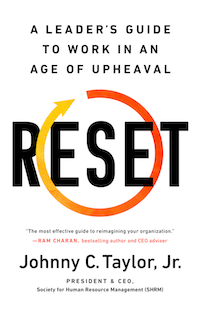Big data has become the culture whisperer of business, telling us everything we want to know and much more. Through algorithms, AI and new tools, CEOs have made numbers talk.
At what point do we stop listening though?
To even the most deeply resourced companies, a paralysis by analysis can sink the best intentions around data. Selectivity is your sanity.
HR Metrics That Matter
- Net Promoter Score
- Inclusion Factor
- Curiosity Indicator
- Employer Brand
We’re going to dig into four essential areas that will help you measure culture, the important underpinning of your organization: net promoter scores, inclusion factors, curiosity indicators, and employer brand. These add up to a Culture Score measured by NICE.
So where do we drill first?
1. Net Promoter Score
How do you quantify likability of your company? One of the first movers with the math on business culture was Bain & Company, where Fred Reichheld developed the Net Promoter System (NPS). Basically, its entire foundation rests on one question: How likely would you be to recommend this company to a friend? The answers are graded 0-10 and bucketed into three categories: Promoters (9-10), Passives (7-8) and Detractors (0-6). If you subtract the percentage of Detractors from Promoters, you’ll get the Net Promoter Score.
Through algorithms, AI and new tools, CEOs have made numbers talk. At what point do we stop listening though?
Look inside your own company culture. What would your employees say about the workplace? Would they recommend it to others? If you can define success, you can define what that metric should be.
What I think valuable is to show a correlation between employee satisfaction and revenue growth relative to your competitors. Let’s make this the next revolution of Net Promoter Score’s application with a real payoff: limiting waste in acquisition and ensuring retention of the right talent.
2. Inclusion Factor — More Than a Metric

How do we measure inclusion? You have to find out if somebody actually feels like they belong. It’s not just analyzing whether your company can attract every diverse candidate out there. Inclusion is how well we keep those people feeling like a valued part of our culture. Are we open to alternative ideas? And can we do that without allowing the pursuit of a new course to be detrimental to the bottom line?
How do we marry inclusion variables with outcome measures? Remember, it’s your job to find the right formula, because there is no one-size-fits-all equation for the contextualized environment of every company. Work with HR, work with your data scientists. Do the work to get the key insights on inclusion, because it will pay you back for years to come.
Is understanding every dynamic of inclusion easy? No, but it’s a pillar needed for your future. As we witnessed with the social and political unrest in 2020, this is the time to get it right.
3. Curiosity Indicator
Think about what your company needs coming out of the pandemic to meet our unsettled landscape. There are paradigm shifts happening every two or three years — today’s Zoom is yesterday’s Skype. We don’t see change in 20-year cycles anymore, so we need a workforce that is curious about what’s next and, most importantly, can act on that innovator’s instinct.
Curiosity-driven productivity matters. We all have to own that. Anyone who doesn’t is in trouble.
How do you quantify curiosity?
It’s not just about creating an environment for curiosity and hiring smart thinkers to seed your next innovation. There’s a difference between actionable curiosity and navel gazing on a whiteboard. Did the idea or process or product go to market? Was there a return on the innovation?
At the end of the day, curiosity-driven productivity matters. We all have to own that. Anyone who doesn’t is in trouble.
4. Employer Brand
When I think about employer brand, it’s really about the quality of people management in the organization, how well that workplace defines itself through its culture, and how that ethos makes it into the brand of the company.
Imagine how a positive employer brand communicates to everyone that your organization is a good employer and a great place to work. It’s the linchpin to hiring and retaining talent, and it drives your perception in the market.
At the heart of this effort, you really want to discover if you have any toxicity in your culture. Are there areas of dissension or discord that could affect outcomes for your organization?
Is understanding every dynamic of inclusion easy? No, but it’s a pillar needed for your future. As we witnessed with the social and political unrest in 2020, this is the time to get it right.
Being a caretaker of your identity has everything to do with how well-regarded your brand is. People will find out in a heartbeat if you are not who you project to be.
Culture Is Key
Why is it important to know where your culture meter stands? As we discovered throughout 2020 culture is the glue that holds you together.
That’s why measuring culture is so essential, but you only need a few indexes; the NICE Scale has four. There is no need to go overboard. I’ve worked with people who fell down the rabbit hole of over analyzing and then became frozen or confused because too much data made everything seem right and wrong at the same time.
A paralysis by analysis can sink the best intentions around data. Selectivity is your sanity.
So measure what matters and add instinct. Good leaders take in the numbers and then allow data to inform their decisions, not dictate them. The pandemic, so reliant on rapidly changing data, provided an opportunity for leaders to check their own cultures. What did the numbers reflect? What do your NPS, inclusion, employer brand, and curiosity factors say about where you are culturally?
* * *
Excerpted from RESET: A Leader’s Guide to Work in an Age of Upheaval by Johnny C. Taylor Jr., SHRM-SCP. Copyright © 2021. Available from PublicAffairs, an imprint of Hachette Book Group, Inc.





